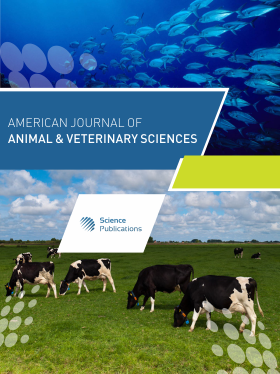Palm Oil Sludge Fermentation with Pleurotus ostreatus and its Application in Laying Quails' Ration
- 1 Andalas University Padang, Indonesia
Abstract
Palm oil sludge is a byproduct of palm oil processing which is still limited in its use as a constituent of poultry feed. This study aims to improve the quality of palm sludge fermented with Pleurotus ostreatus and to determine its effect on the production of laying quail. The study was divided into 2 stages of research. Phase 1 of the laboratory experiment was the determination of the dose of the inoculum and the duration of fermentation of palm sludge. This stage uses a Completely Randomized Design (CRD) 3×3 treatment design with 3 replications. A Factor (inoculum dose) is (A1 = 6%, A2 = 8% and A3 = 10%) of the number of substrates. B Factor (fermentation time) is (B1 = 9 days, B2 = 11 days and B3 = 13 days). The parameters measured were the activity of cellulase enzymes (U/ml), lignin peroxidase (U/ml) and crude fiber content (%), cellulose (%) and lignin (%). Phase 2 biological experiment to laying quails is the application of Fermented Palm Sludge (FPS) products in laying quail rations. This stage uses a Completely Randomized Design (CRD) with 5 treatments and 4 replications. Provision of FPS consisting of: A (0% FPS), B (6% FPS), C (12% FPS), D (18% FPS), E (24% FPS). The parameters measured were feed consumption (g/head/day) and daily egg production (%). The results of the Phase 1 variance analysis showed that there was no interaction (P>0.05) between the inoculum dose and the fermentation time for the activity of cellulase enzymes, lignin peroxidase (U/ml) and the content of crude fiber, cellulose and lignin fermented palm sludge, but inoculum doses highly significant effect (P<0.01) on the activity of cellulase (U/ml), lignin peroxidase (U/ml), crude fiber content (%), cellulose (%) and lignin (%). The results of the Phase 2 variance analysis showed that the use of FPS with Pleurotus ostreatus had no significant effect (P>0.05) on ration consumption and egg production. The results of the study concluded that the 8% inoculum dose and 9 days fermentation time was the best treatments to improve the quality of palm sludge. FPS can be used up to 24% in laying quail rations. At this level, it can reduce 27.30% corn and 55.02% soybean meal and can maintain the same ration consumption and egg production as control.
DOI: https://doi.org/10.3844/ajavsp.2020.309.314

- 3,364 Views
- 2,534 Downloads
- 0 Citations
Download
Keywords
- Dose of Inoculum
- Duration of Fermentation
- Pleurotus Ostreatus
- Palm Sludge
- Laying Quails and Cellulase Enzymes
